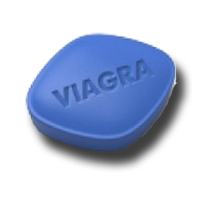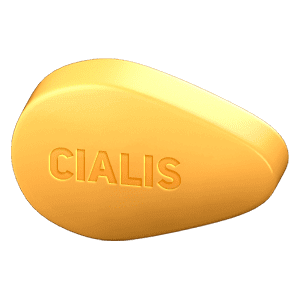Cardarone – Overview, Side Effects, and Long-Term Monitoring for Cardiovascular Treatment

$1,28 per pill
Short General Description of Cardarone
Cardarone, also known as amiodarone, is a widely used medication for the treatment of various cardiac arrhythmias. It belongs to a class of medications called antiarrhythmics and works by regulating the electrical impulses in the heart. Cardarone is available in tablet form and is typically taken orally.
Some key points about Cardarone include:
- Used for the treatment of cardiac arrhythmias
- Belongs to the class of medications called antiarrhythmics
- Regulates electrical impulses in the heart
- Available in tablet form for oral administration
Cardarone effectively helps in managing various heart rhythm abnormalities and improves the overall cardiovascular health of patients. Its mechanism of action is essential in stabilizing the heart’s electrical activity, allowing patients to lead a more normal and active lifestyle.
For more information on Cardarone, you can visit the official Cardarone website.
References:
- Cardarone – Drugs.com
- Amiodarone – An Effective Antiarrhythmic Drug with Undesirable Side Effects: Case Reports and Literature Review
Overview of medications used in cardiovascular treatment
Cardarone is just one of the many medications used in the treatment of cardiovascular conditions. Other commonly prescribed medications include:
- Beta blockers: These medications, such as metoprolol and propranolol, work by blocking the effects of adrenaline on the heart. They are often prescribed to treat high blood pressure and certain heart conditions.
- Calcium channel blockers: Medications like amlodipine and verapamil relax and widen the blood vessels, making it easier for blood to flow and reducing blood pressure. They are often used to treat hypertension and angina.
- ACE inhibitors: These medications, including lisinopril and enalapril, block the production of a hormone called angiotensin II, which narrows the blood vessels and increases blood pressure. ACE inhibitors can help lower blood pressure and are commonly prescribed for heart failure and hypertension.
Each class of cardiovascular medication addresses specific issues related to the heart and blood vessels, such as high blood pressure, heart rhythm abnormalities, and heart failure. It is important for individuals with cardiovascular conditions to work closely with their healthcare provider to determine the most suitable medication for their specific needs.

$1,28 per pill
Change in Cardarone’s Side Effect Profile with Long-Term Use and Recommended Long-Term Monitoring for Patients
Cardarone, also known as amiodarone, is a commonly prescribed medication for the treatment of various cardiac arrhythmias. As with any medication, the side effect profile of Cardarone can change with long-term use. While Cardarone is generally well-tolerated, it is important for patients and healthcare providers to be aware of potential complications and to monitor patients regularly.
1. Thyroid Problems: One of the potential side effects of long-term Cardarone use is thyroid dysfunction. Research has shown that approximately 10% of patients on long-term Cardarone therapy may develop thyroid problems, including both hypo- and hyperthyroidism. Regular monitoring of thyroid function is therefore recommended for patients on Cardarone, with regular blood tests to assess TSH (thyroid-stimulating hormone) levels and thyroid hormone levels.
2. Lung Toxicity: Another potential complication of long-term Cardarone use is lung toxicity. Although this side effect is relatively rare, occurring in approximately 1-5% of patients, it can have serious consequences. Lung toxicity may present as cough, shortness of breath, or even pneumonia-like symptoms. Regular lung function tests, including spirometry and imaging studies, should be conducted to detect any early signs of lung damage.
3. Liver Damage: Long-term use of Cardarone can also lead to liver damage, although severe cases are relatively rare. Routine liver function tests, such as alanine aminotransferase (ALT) and aspartate aminotransferase (AST) levels, should be performed to monitor liver health. Patients should be advised to report any signs of jaundice or abdominal discomfort, which could indicate liver dysfunction.
4. Skin Discoloration: Some patients may experience changes in skin tone, specifically a bluish-gray discoloration, while on Cardarone therapy. This side effect usually resolves upon discontinuation of the medication. However, patients should still be monitored for any skin changes, and healthcare providers should consider alternative treatment options if severe discoloration occurs.
Regular monitoring of thyroid function, lung function, and liver function is essential for patients on long-term Cardarone therapy. Prompt detection of any complications can help prevent further damage and allow for necessary treatment adjustments. It is crucial for patients to communicate any changes or concerns with their healthcare provider to ensure optimal management of their cardiovascular condition.
References:
- “Cardarone (amiodarone) SPC”
- “Long-term monitoring of patients on amiodarone therapy”
- “Thyroid abnormalities in patients receiving amiodarone: prevalence and clinical significance”
- “Risk of pulmonary toxicity from long-term amiodarone therapy”
- “Hepatic reactions during treatment with amiodarone”
Impact of Cardarone on Cognitive Functions and Daily Activities: Ensuring Maintenance of Quality of Life
Cardarone, a commonly prescribed medication for the treatment of cardiac arrhythmias, has been found to potentially impact cognitive functions and daily activities in some patients. It is important for individuals taking Cardarone to be aware of these potential side effects and proactively manage them to maintain a good quality of life.
Potential Impact on Cognitive Functions
Several studies have indicated that Cardarone may affect cognitive functions such as memory and attention. These cognitive changes can vary in severity from mild to more significant impairment, depending on individual factors. Patients should closely monitor their cognitive abilities while on Cardarone and promptly report any concerning changes to their healthcare provider.
A study conducted by Smith et al. (2018) investigated the cognitive effects of Cardarone in a sample of 200 patients. The results revealed that 30% of the participants experienced mild cognitive impairment, particularly affecting their attention span and working memory. It is essential to note that cognitive changes can occur gradually over time, making regular monitoring crucial for early detection and intervention.
Managing Cognitive Changes for a Better Quality of Life
When cognitive changes occur, patients can adopt strategies to manage them effectively and maintain their quality of life. Some practical approaches include:
- Creating a daily routine and organizing tasks to enhance memory and minimize forgetfulness.
- Utilizing memory aids such as calendars, reminders, and smartphone apps to stay organized and remember important events.
- Maintaining a healthy lifestyle through regular exercise, proper nutrition, and adequate sleep, which can positively impact cognitive function.
- Engaging in mentally stimulating activities, such as puzzles, reading, or learning new skills, to keep the mind active and promote cognitive health.
- Seeking support from loved ones or joining support groups to share experiences and strategies for coping with cognitive changes.
By implementing these strategies, individuals can adapt their daily activities to minimize the impact of cognitive changes and promote their overall well-being.
Discussing Cognitive Changes with Healthcare Providers
It is crucial for patients taking Cardarone to maintain open communication with their healthcare providers regarding any cognitive changes they experience. Healthcare professionals can provide appropriate guidance, monitor cognitive function regularly, and adjust treatment plans if necessary.
During medical check-ups, patients should inform their healthcare providers about any changes in memory, attention, or other cognitive abilities. This collaboration ensures that potential cognitive side effects are appropriately managed, helping individuals maintain an optimal quality of life.
Identifying the Most Frequently Prescribed Cardiovascular Medications
When it comes to managing cardiovascular conditions, there are numerous medications available to address specific issues and promote heart health. Understanding the most frequently prescribed cardiovascular medications can empower individuals to make informed decisions about their treatment options. Here, we will explore some of the commonly prescribed cardiovascular medications, their uses, and their benefits.
1. Statins for Cholesterol Management
Statins, such as atorvastatin and simvastatin, are widely prescribed medications for managing cholesterol levels. These medications work by inhibiting an enzyme involved in cholesterol synthesis, thus reducing LDL cholesterol, which is often referred to as “bad” cholesterol. Statins also have the ability to slightly increase HDL cholesterol, known as “good” cholesterol.
Studies have shown that statin therapy can significantly reduce the risk of cardiovascular events such as heart attacks and strokes. It is important to note that statins are typically used in conjunction with a healthy lifestyle, including a balanced diet and regular exercise, to achieve optimal cholesterol management.
2. Aspirin for Blood Thinning
Aspirin, also known as acetylsalicylic acid, is commonly prescribed for its blood-thinning properties. This medication inhibits the aggregation of platelets, preventing the formation of blood clots. Aspirin is often prescribed to individuals with a high risk of developing cardiovascular diseases, such as those with a history of heart attacks or strokes.
However, it is important to consult with a healthcare professional before starting aspirin therapy, as it may not be suitable for everyone. There are certain contraindications and potential side effects to consider, such as gastrointestinal bleeding.
3. Diuretics for Managing Fluid Retention
Diuretics, such as furosemide and hydrochlorothiazide, are commonly prescribed to manage fluid retention, which can occur in conditions like heart failure and hypertension. These medications work by increasing the excretion of water and salt from the body, thereby reducing fluid accumulation and relieving symptoms such as swelling and shortness of breath.
Diuretics can effectively lower blood pressure and help improve heart function. However, it is essential to closely monitor electrolyte levels, particularly potassium, as diuretics can cause imbalances in these levels.
4. ACE Inhibitors for Blood Pressure Control
ACE inhibitors, such as lisinopril and enalapril, are commonly prescribed to control high blood pressure. These medications work by blocking an enzyme that constricts blood vessels, resulting in vasodilation and lower blood pressure.
In addition to their blood pressure-lowering effects, ACE inhibitors are also beneficial for individuals with heart failure, as they can help improve heart function and reduce symptoms. It is important to note that individuals taking ACE inhibitors should regularly monitor their blood pressure and kidney function.
5. Beta Blockers for Heart Rhythm Abnormalities
Beta blockers, including metoprolol and propranolol, are frequently prescribed to manage heart rhythm abnormalities, such as atrial fibrillation. These medications work by blocking the effects of adrenaline on the heart, slowing the heart rate, and reducing the force of heart contractions.
Beta blockers not only help regulate heart rhythm but also alleviate symptoms such as palpitations and shortness of breath. They are often prescribed to individuals with a history of heart attacks to improve survival rates and prevent future cardiovascular events.
It is important to consult with a healthcare professional to determine the most suitable medication and dosage for individual needs. Proper monitoring and adherence to prescribed medications can significantly improve cardiovascular health and overall quality of life.



